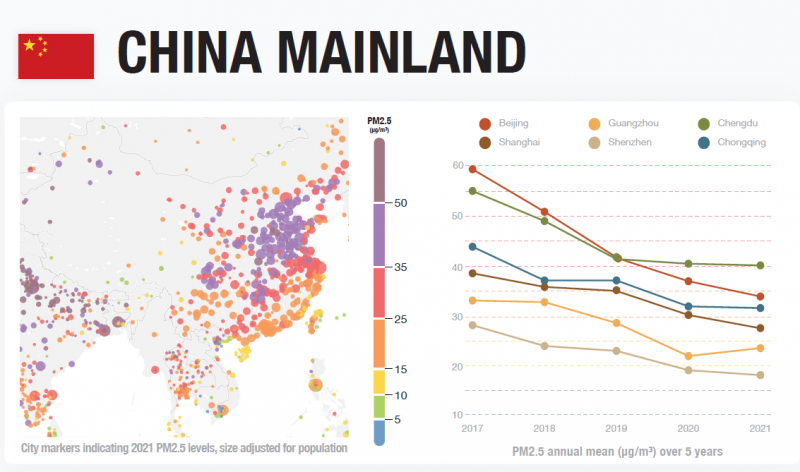Beicology: Beijing Meets All National Air Quality Standards for First Time
With dining-in still a no go in the capital it can feel like there isn’t much good news going around at the moment, but there is one thing to celebrate – the continued improvement of Beijing’s air. This week saw a new first with the Beijing municipal ecology and environment bureau announcing on Wednesday that Beijing meets all national air quality standards in 2021.
For the first time Beijing saw all its six major ambient air pollutants in 2021 reach the Level II national standard. Of these, the ones we normally hear about fall into the category of particle pollution, the measurement of which you’ll probably be familiar with as the PM2.5 and PM10 readings from your AQI app.
The official AQI system Level II definition is: "The air quality is acceptable. There are certain air pollutants that may cause health issues to a small number of people who should reduce outdoor activities."
The report states that the average PM2.5 level last year was 33 micrograms per cubic meter, while the average PM10 level was 55 micrograms per cubic meter. But how does that actually compare to past levels?
Well, ten years ago the average PM2.5 level was 99 micrograms per cubic meter and the average PM10 level was 120 micrograms per cubic meter. This means that PM2.5 levels are one third of what they were ten years ago and PM10 levels have more than halved.

We already reported earlier this year on how PM2.5 levels have improved, but according to Wednesday’s report there have also been record lows for other key air pollution readings, such as sulfur dioxide, nitrogen dioxide, carbon monoxide and ozone. Last year, nitrogen dioxide and sulfur dioxide levels were 26 and three micrograms per cubic meter respectively.
Along with better air, Beijing has also seen improvements in water quality. The report stated that none of the total 97 sections of Beijing's major water systems were graded Class V in terms of their water quality in 2021. In fact, 75.2 percent of surface water in the country’s five-tier water quality system was Grade III, up 11.4 percentage points compared to the previous year.
According to China's water quality classification system, Class V is "mainly applicable to water bodies for agricultural water supply and for general landscape requirements." While Grade III is defined as "mainly applicable to class B water source protection area for centralized drinking water supply, sanctuaries for common species of fish, and swimming zones." (The highest grade in the system is Grade V+, which is defined as "essentially useless.")
Although Beijing still has a way to go in its fight against pollution, the yearly improvements are definitely a nice change of pace for the city.
READ: PM 2.5, Beijing's Bugbear of Bad Air, Drops Again For Another Record Low in 2021
Images: IQAir







